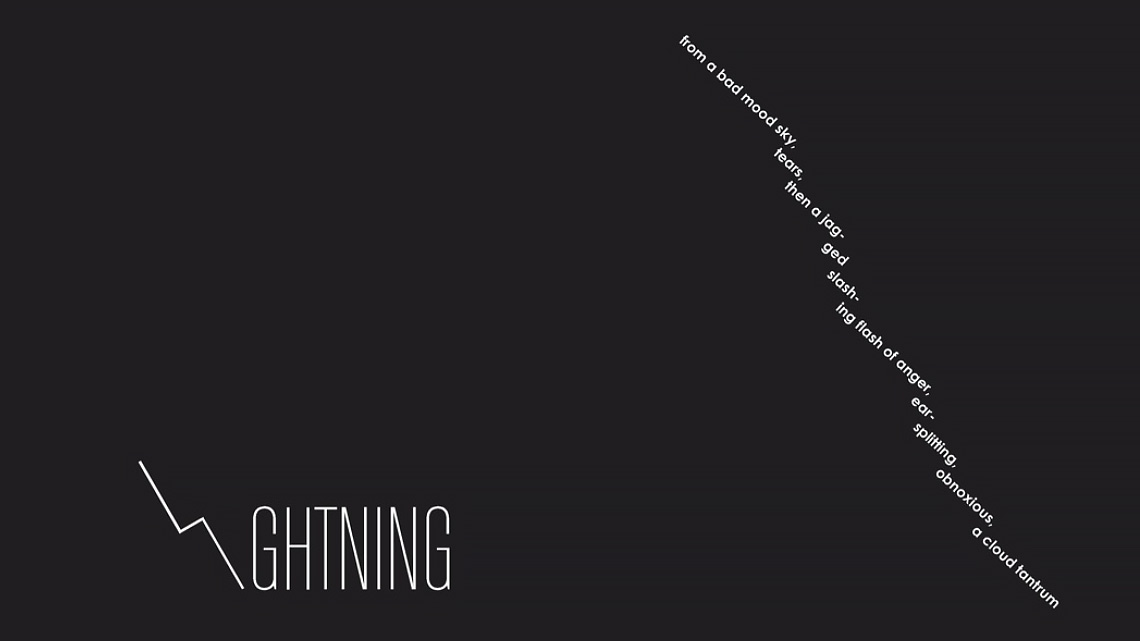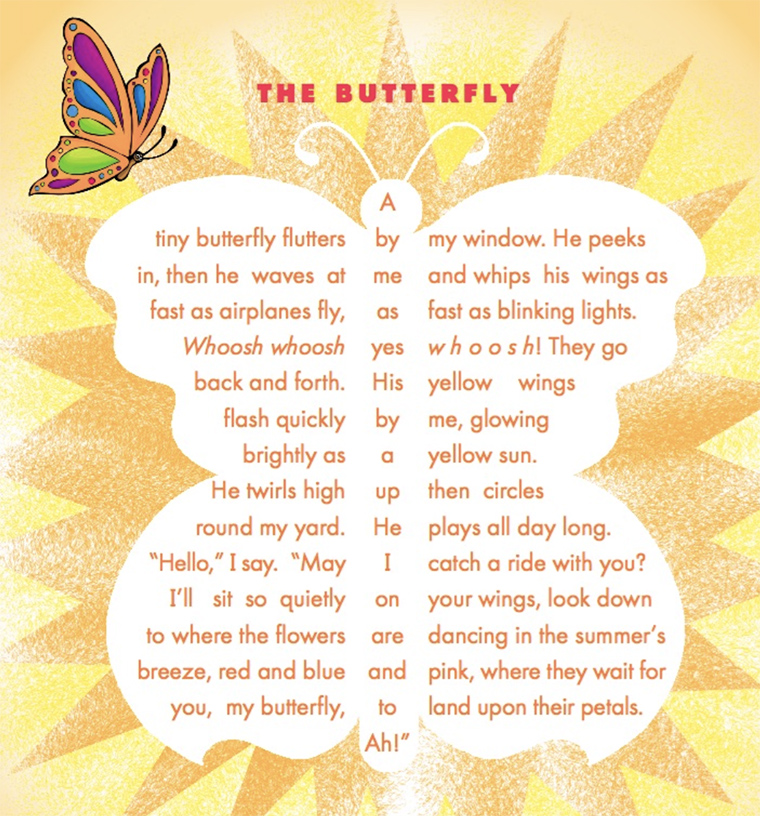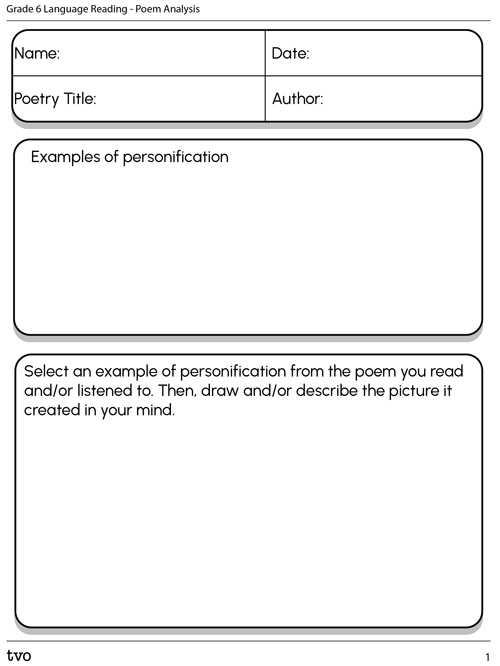Minds On
When words take shape
Read and/or listen to the following poem “Lightning” by Bob Raczka. What do you do notice about this poem?
You can record your observations using a method of your choice.

Press the ‘Read Poem’ button to access the text of this poem.
“Lightning” by Bob Raczka
from a bad mood sky,
tears,
then a jag-ged slash-ing flash of anger,
ear-splitting, obnoxious,
a cloud tantrum
“Lightning” by Bob Raczka
Action
Concrete poems
Bob Raczka’s poem, “Lightning” that you explored in the Minds On, is an example of a concrete poem.
Unlike some poems, concrete poems don’t have to rhyme. In fact, when it comes to concrete poems, the only “rule” that you need to keep in mind is the words form shapes that help to illustrate the subject of the poem. (This is why the words in Raczka’s poem, “Lightning,” take the shape of a lightning bolt.)
Raczka’s poem is also a great example of a type of figurative language that we encounter in poetry called, personification. Let’s explore what personification means and how it works.
The sun smiled back at me
What is personification? Personification is a tool that poets use to give human characteristics to something non-human.
This can make poems more relatable or realistic or true to life. In general, it’s easier to connect to or understand a non-human or inanimate object when it’s personified. Here are a few examples:
- The leaves danced in the wind.
- The moon smiled at the stars in the sky.
- The last slice of pizza called my name.

As an example, saying that the leaves “danced” in the wind creates an image in the reader’s mind. Saying “the leaves blew in the wind” might not have the same effect.

Now think back to Raczka’s poem in the Minds On section.
Did you notice that the sky, lightning bolt, and cloud in the poem, “Lightning” all have human-like qualities? Feel free to return to the Minds On to examine the poem again.
Press ‘Extended Learning’ to reveal more about human-like qualities in the poem.
The sky is described as “a bad mood sky” (Raczka, 2016). Then, the lightning bolt is described as a “jag-ged slash-ing flash of anger” (Raczka, 2016). And the cloud is having a tantrum.
All of these are examples of personification. The sky can’t be in a bad mood, lightning bolts can’t be angry, and clouds don’t have tantrums.
Back to concrete poems
Read and/or listen to the following poem “The Butterfly” by Yvonne Pearson. Then, read and/or listen to it a second time. What examples of personification can you find in this poem? Can you find any other types of figurative language in this poem?
Record your findings using the following fillable and printable Poem Analysis template or with another method of your choice.

Press the ‘Read Poem’ button to access the text of this poem.
“The Butterfly” by Yvonne Pearson
A
tiny butterfly flutters by my window. He peeks
in, and then he waves at me and whips his wings as
fast as airplanes fly, as fast as blinking lights.
Whoosh whoosh yes whoosh! They go
back and forth. His yellow wings
flash quickly by me, glowing
brightly as a yellow sun.
He twirls high up then circles
round my yard. He plays all day long.
“Hello,” I say. “May I catch a ride with you?
I’ll sit so quietly on your wings, look down
to where the flowers are dancing in the summer’s
breeze, red and blue and pink, where they wait for
you, my butterfly, to land upon their petals.
Ah!”
“The Butterfly” by Yvonne Pearson
Consolidation
Let's reflect

Use the following questions to reflect on your learning about concrete poems and personification. You can record your responses using a method of your choice.
- What is Yvonne Pearson’s poem, “The Butterfly,” about? Would the poem still have the same meaning if it weren’t in the shape of a butterfly? Explain your thinking.
- How does the shape of a concrete poem contribute to the meaning of the poem?
- Raczka’s, “Lightning,” is the shape of a lightning bolt and Pearson’s, “The Butterfly,” is in the shape of a butterfly.
- What have you learned about the effects of using personification in poetry?
Reflection
As you read through these descriptions, which sentence best describes how you are feeling about your understanding of this learning activity? Press the button that is beside this sentence.
I feel…
Now, record your ideas using a voice recorder, speech-to-text, or writing tool.
